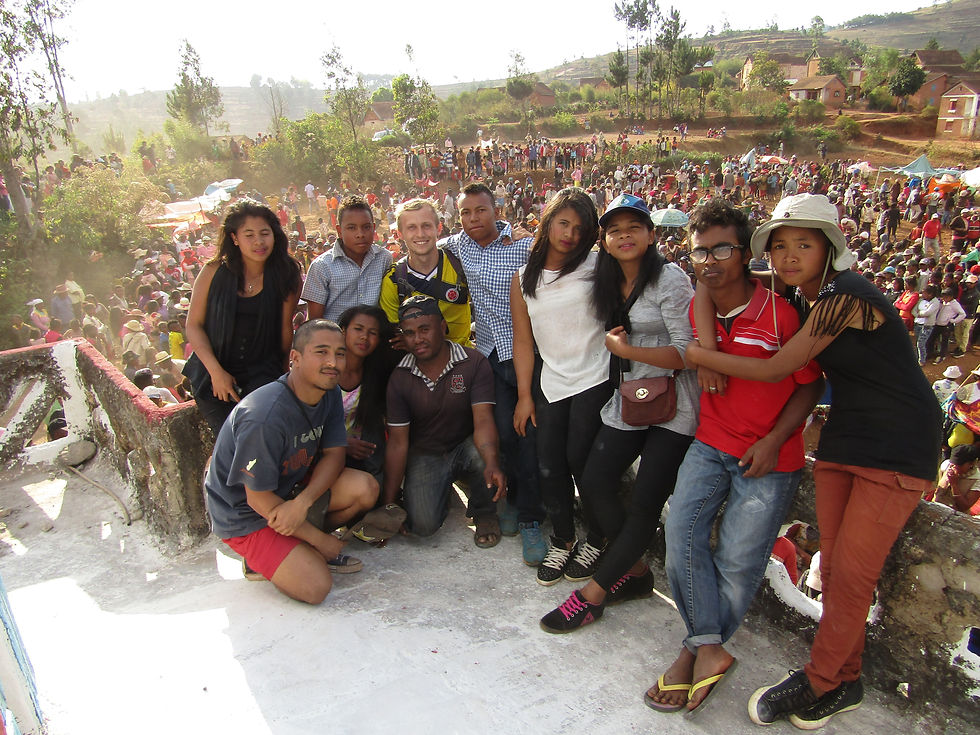Famadihana (Turning of the bones)
- Angus
- Sep 26, 2017
- 3 min read
What it is?
Famadihana is a Malagasy funerary tradition that literally translates to the turning of the bones. In this tradition, the people of Madagascar retrieve the bodies of ancestors from the family crypts and re-wrap them with clean, fresh cloth. The bodies are then taken around the family crypt seven times and danced with before being placed back into the crypt. There is live music, dancing, food and plenty of drinking. This is not a sad occasion but a day to show your family just how much you love them and the organising and hosting of such an event is quite costly to the family as they must provide food and accommodation for the hundreds of guests. Where and when to go?
The tradition is celebrated in and around the highlands just south of the capital, close to Antsirabe and is only celebrated between July and September before it gets really hot in Madagascar.
How to find it?
The easiest way to find out where and when a Famadihana is happening is to ask the cyclo-pousse drivers in Antsirabe if they know whether any are taking place.
My personal experience:
After having caught up with my Malagasy friend from University in England, Tony, in Tana I explained that I would love to see Famadihana. We decided to take his car to Antsirabe and see if we could find out whether there was one going on from one of the cyclo-pousse drivers. The first person we asked informed us that there were a few going on and that he would be willing to guide us to the location the next morning. We knew that it was polite to bring a bottle of rum along with a small monetary donation so we bought some rum and called it an early night as tomorrow would be a long day in the blistering heat.
After getting up the next day we set off to the highlands with our guide and arrived at the village around 11AM. Tony asked around for the elders who were organising the Famadihana to ask whether it would be possible for us to join in the tradition. After around an hour we were invited into the home of the elders and we were offered food (and more food, and more food) and talked a bit about ourselves. The family said that they would be glad for us to join and we thanked them and presented them with the rum and donation after which we drank some of the homemade rum and had a few cigarettes. We were then told that we would be heading to the crypt.
The closer we got to the crypt the louder the music got and I was surprised by how many people there were. There were well over 1,000 people gathered here for the family and all were in good spirits and everyone was extremely friendly. They were happy for me to take pictures and almost everyone wanted one taken of them or with them.

We ended up sitting down in the shade and passing around the local rum and we also ordered some beers. After a few more selfies and a lot of rum it was time to head up to the crypt (we were with the immediate family). At this point the bodies were being taken around the crypt and the family asked if I wanted to go on top of the crypt. After being assured that I was not going to cause any offence to anyone, we went on top of the crypt where you could see the whole ceremony. I was asked to take photos of everyone and we were eventually asked down by a local politician who began to argue with the family.

By 4pm we had finished most of the rum and were invited back to the home where we bid our farewells and expressed our gratitude once more. I was amazed at the juxtaposition between the way in which we remember our loved ones in the West versus here; it was much more about celebrating life than mourning a loss and this, in my opinion, was a much more serene way of commemorating those who've passed. In all, this was one of the most unique experiences of my life and I am thankful to the family for inviting me to such an event and to Tony for being my translator throughout it.










Comments